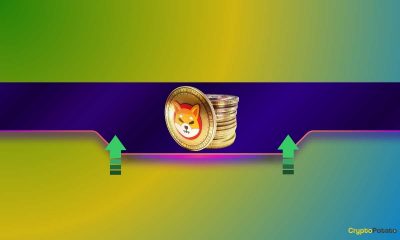Forex
Column-Rock and hard place? China opts to hold yuan: Mike Dolan
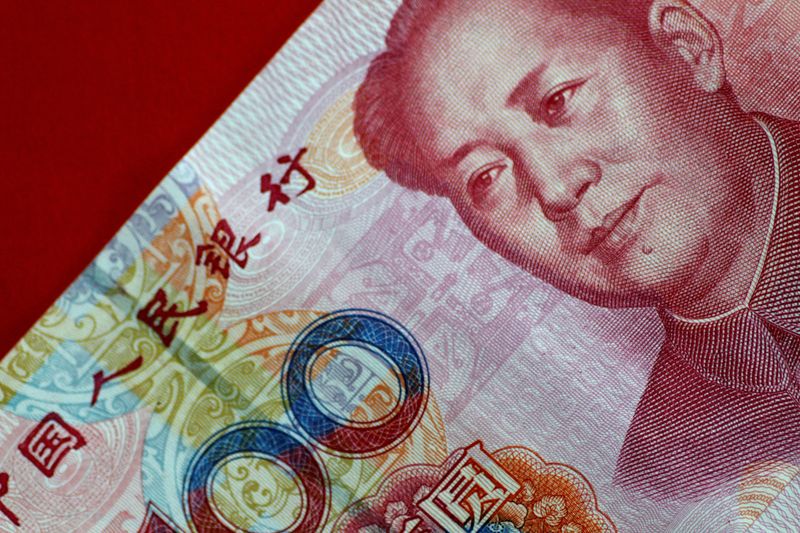
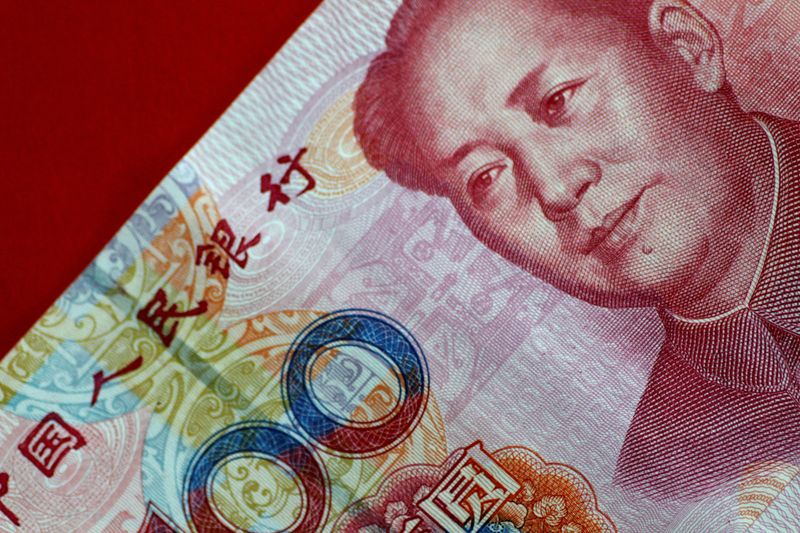
© Reuters. FILE PHOTO: A China yuan note is seen in this illustration photo May 31, 2017. REUTERS/Thomas White/Illustration/File Photo
By Mike Dolan
LONDON (Reuters) – China’s seeming determination to hold the yuan stable in the face of a deflationary asset price bust and capital flight leaves it with an unenviable conundrum familiar in past property crises around the world.
Does it hold the currency steady to prevent a further run on foreign investor confidence? Or should it entertain another export-boosting yuan depreciation as an alternative to the ‘internal devaluation’ of falling domestic consumer and asset prices already crimping growth?
For now, as government officials publicly state almost daily, it continues to opt for a basically stable exchange rate.
And curiously, the still tightly controlled yuan held firm this week even as authorities moved to ease monetary policy once again to stabilise another alarming lurch lower in China stocks.
For some, the fact that Beijing may be at last ratcheting up piecemeal policy supports to date may be enough of a confidence boost to buoy the currency despite the prospect of lower interest rates.
“Proactive policies can bring more positive impact from the risk sentiment channel, which may overcome the pressure from its yield disadvantage in the near term,” HSBC’s chief China economist Jing Liu and team told clients.
What’s more, expectations of U.S. and European interest rate cuts later this year may also allow China some currency wiggle room – unlike last year when the yuan fell 8% as Chinese rates were cut while western central banks tightened.
But the “sentiment channel” may have to work hard to convince foreign investors – many of whom have removed most all direct exposure to China’s markets as they await next steps and try to figure out Beijing’s priorities.
And the question of why Beijing would even want a strong yuan at this juncture looms large.
“What are the alternatives for China? One thing is they could devalue the currency – but they don’t want to,” said Cesar Perez Ruiz, chief investment officer at Switzerland’s Pictet Wealth Management, adding he has sold out of China last year and remained on the sidelines with no direct exposure.
“The other thing is to grow exports through internal devaluation of prices and wages – as countries like Spain, Ireland and others did over 10 years ago – but that’s not great for growth of the country.”
NO EASY OPTIONS
China finds itself on the other side of the boom years of rapid growth and a productivity boom, nursing a popped credit-fuelled property bubble, slowing growth and falling prices.
U.S. corporate, banking and portfolio money is exiting – rattled by geopolitical rifts, bilateral investment curbs, fractured world trade patterns and also a population decline that’s sapping future growth potential.
The shock to internal and external investment confidence has led stock prices to nosedive for over a year – underperforming world indexes by more than 30%. And Beijing seems so far either unwilling or unable to resolve the real estate debt problem with sufficient potency, or much inclined to soothe U.S. relations.
Excluding the wild swings of the COVID outbreak in 2020, nominal Chinese economic growth is estimated by some to have ebbed to its lowest since the mid-1970s as consumer price deflation takes hold.
This week’s monetary easing via reserve requirement cuts likely tees up more official interest rate cuts ahead – with the 160 basis point yield premium on U.S. Treasuries bonds widening anew.
But with consumer prices falling, the “real” inflation-adjusted policy rate has been rising since August anyway and so overall conditions will have barely eased at all.
“Slow, reactive and insufficient” was how Morgan Stanley analysts described official policy supports before this week.
Shoring up the yuan is at the root of much of the hesitation.
And several reasons are cited for reluctance to pull the currency lever.
The first is fear that signalling a large yuan decline might spook overseas and domestic investors even more and accelerate capital flight – although that appears to be happening anyway as the “internal devaluation” saps asset prices and growth.
Another is a reluctance to re-ignite property excesses or lean back on its export engine, given long-standing goals of re-orienting the economy toward domestic consumption rather than overseas demand.
And yet the alternative option of accepting a housing slide – where many park savings – and a corporate investment drought seemed to have drained local spending anyway.
Long-standing strategic commitment to “internationalise” use of the yuan may make also make it totemic as stable price – even though the currency is not even fully convertible yet and so is still relatively minor as a trading or reserve currency.
Finally, many suspect concerns that any devaluation may reap trade retaliation and restrictions from countries fearful of a new wave of cheap Chinese export competition is another potential barrier to allowing the yuan to slide.
For analysts at CrossBorder Capital, the dilemma is simply all too familiar with property busts of yesteryear – not least
Japan’s in the 1980s/1990s, southeast Asia in the late 1990s and even in the United States in 1920s/1930s.
“China is suffering the aftermath of an asset bubble resulting from a misaligned ‘real’ exchange rate,” they wrote.
“Chinese policymakers need to channel adjustment away from domestic prices to avert a deflationary spiral. A major devaluation of the is needed,” they added, suggesting another 10% drop to 8 yuan per dollar is warranted.
The opinions expressed here are those of the author, a columnist for Reuters.
Forex
UBS maintains RBA rate cut forecast, weighs in on AUD/USD
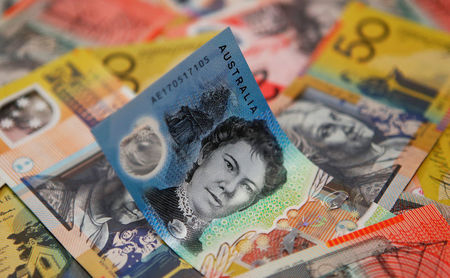
On Thursday, UBS provided insights into the Australian Federal Treasurer Jim Chalmers’ third budget announcement, which reported a second consecutive surplus of AUD 9.3 billion.
Despite this positive outcome, UBS highlighted a projected deficit of AUD 28.3 billion for the fiscal year 2024-25, a figure that is wider than the Treasury’s earlier forecasts.
The firm pointed out that the deficit projection for 2024-25 might be based on overly conservative commodity price assumptions.
UBS suggests that commodity prices are likely to remain higher than anticipated, which could lead to upward fiscal revisions in the future. This outlook is based on details found in the footnotes of the budget document.
In light of the budget details, UBS confirmed that their expectations for the Reserve Bank of Australia’s (RBA) monetary policy remain unchanged. They continue to forecast a 25 basis points cut in the cash rate in February 2025.
Moreover, UBS anticipates that the Australian dollar will maintain its higher trading range against the US dollar, fluctuating between 0.65 and 0.675.
The budget surplus achieved this year contrasts with the anticipated deficit for the next fiscal year. This shift reflects the dynamic nature of Australia’s economic landscape and the challenges that may arise in the medium term. UBS’s analysis suggests that the budget’s implications have been thoroughly considered and have not altered their long-term economic forecasts for Australia.
UBS’s commentary provides a focused perspective on the fiscal situation in Australia, without implying broader economic trends or industry-wide impacts. The firm’s projections are specific to their analysis of commodity prices and the anticipated actions of the RBA, taking into account the latest federal budget details.
remove ads
.
This article was generated with the support of AI and reviewed by an editor. For more information see our T&C.
Forex
Dollar stabilizes after sharp CPI-induced fall; euro hands back some gains
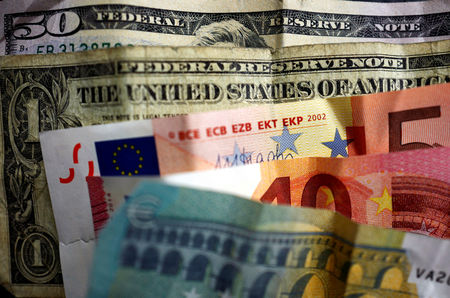
Investing.com – The U.S. dollar steadied in European trade Thursday, after dropping to multi-week lows overnight in the wake of a milder U.S. inflation report, which brought Fed rate cuts back into focus.
At 04:25 ET (08:25 GMT), the Dollar Index, which tracks the greenback against a basket of six other currencies, traded 0.1% higher at 104.285, having fallen to a five-week low just below 104 overnight.
Dollar on back foot after key inflation data
The dollar remains on the back foot after the latest U.S. inflation data raised expectations the will deliver two interest rate cuts this year, probably starting in September.
Wednesday’s rose by 0.3% in April, below an expected 0.4% gain, which came as a relief to markets after sticky consumer prices in the first quarter had led to a sharp paring of rate cut bets and even stoked some worries of an additional hike.
The data also resulted in U.S. Treasury yields sinking to six-week troughs, as traders reassessed the likely path of the Fed’s monetary policy.
“Markets have given a greater weight to the encouraging news coming from two days of inflation figures, which has caused the dollar to almost entirely erase the gains after the CPI disappointment in mid-April,” said analysts at ING, in a note.
There are a number of Fed speakers due to opine later in the session, but it’s likely investors will need concrete evidence if rate cut expectations are to be changed drastically from now.
remove ads
.
“Our preferred call at this stage is not for a continuation of a dollar decline until the end of May, but instead a period of quiet trading with little sense of direction and low volatility. That’s mainly because hard data is needed to move the needle substantially on Fed pricing, and the next key release – core PCE – is only on 31 May,” ING added.
Euro retreats from earlier highs
In Europe, traded 0.1% lower to 1.0867, with the euro retreating slightly Thursday after earlier climbing to its highest since March 21.
The is widely expected to start cutting interest rates from a record high in June, and markets now see up to three rate cuts this year, or two beyond June, most likely in September and December.
“The 1.0900 level should not be a very strong resistance if U.S. data – for example, jobless claims today – adds pressure on the dollar. However, a move to the 1.1000 benchmark levels seems premature given the still sticky inflation picture in the U.S.,” ING said.
fell 0.1% to 1.2675, with sterling handing back some of the previous session’s gains when it climbed above 1.27 for the first time since April 10.
The is also expected to cut rates from a 16-year high this summer, but recent stronger than expected GDP growth could delay this until after the ECB moves.
Yen posts minor gains after weak GDP data
In Asia, fell 0.2% to 154.64, with the yen benefiting from the dollar’s weakness, but the pair remained well above levels hit earlier in May, when the government was seen intervening in currency markets.
remove ads
.
The yen’s recovery stalled as data showed the Japanese economy shrank much more than expected in the first quarter, raising doubts over just how much headroom the Bank of Japan has to keep raising interest rates.
traded largely flat at 7.2187, as sentiment towards China remains weak after Washington imposed stricter trade tariffs on China’s key industries, such as electric vehicles, medicines and solar technology.
Forex
Yen climbs while dollar stabilises after US inflation ebbs
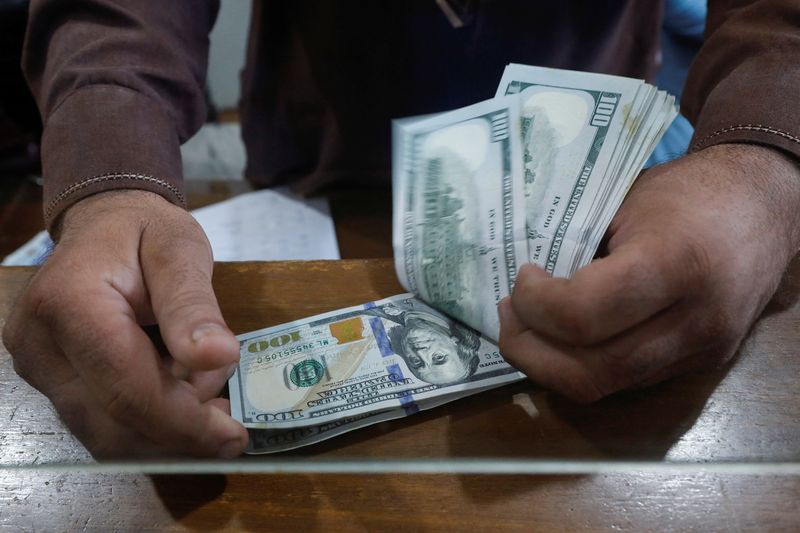
By Harry Robertson and Tom Westbrook
LONDON/SINGAPORE (Reuters) – The Japanese yen rallied for a second day on Thursday after data on Wednesday showed a slowdown in U.S. inflation, while the dollar found a footing against other currencies following a sharp drop the previous day.
U.S. inflation slowed to 0.3% in April from a month earlier, down from 0.4% in March and below expectations for another 0.4% reading, Wednesday’s data showed.
Year-on-year core inflation – which strips out volatile food and energy prices – fell to its lowest in three years at 3.6%. Meanwhile, retail sales were flat, suggesting conditions for Federal Reserve interest rate cuts are falling into place.
The dollar dropped 1% against the yen on Wednesday after the data and was down a further 0.38% on Thursday at 154.32, having fallen as low as 153.6 before weak Japanese growth figures took some of the shine off the yen.
The Japanese currency has fallen around 9.5% this year as the Bank of Japan has kept monetary policy loose while higher Fed interest rates have drawn money towards U.S. bonds and the dollar. The yen has been particularly sensitive to any widening or closing of the interest rate differential.
The , which tracks the currency against six major peers, was last up 0.11% at 104.32 on Thursday after falling 0.75% on Wednesday as investors raise their bets on Fed rate cuts, now envisaging two reductions by the end of the year.
Some analysts said Fed officials will want to see proof of inflation’s downward path before countenancing cuts, a point made by Minneapolis Fed President Neel Kashkari on Wednesday.
remove ads
.
Francesco Pesole, FX strategist at ING, said: “In practice there isn’t all that much to be all that optimistic about. Inflation is moving in the right direction but still not at levels that would allow the Fed to cut rates.”
Pesole said investors were now waiting for U.S. personal consumption expenditures inflation data in late May. “My view at this stage is that we could just default to another couple of weeks of low volatility, lack of direction, and range-bound trading.”
The euro hit a two-month high at $1.0895 on Thursday before dipping to trade 0.1% lower at $1.0874. Britain’s pound reached a one-month top of $1.2675 before falling back slightly.
The Australian dollar, which surged 1% on Wednesday, hit a four-month high at $0.6714 but then paused after an unexpected rise in Australian unemployment.
It was last at $0.6684 as traders priced out any risk of a further rate hike in Australia.
touched a three-week high of $66,695 before dipping slightly.

 Forex2 years ago
Forex2 years agoForex Today: the dollar is gaining strength amid gloomy sentiment at the start of the Fed’s week

 Forex2 years ago
Forex2 years agoHow is the Australian dollar doing today?

 Forex1 year ago
Forex1 year agoUnbiased review of Pocket Option broker

 Forex2 years ago
Forex2 years agoDollar to pound sterling exchange rate today: Pound plummeted to its lowest since 1985

 Cryptocurrency2 years ago
Cryptocurrency2 years agoWhat happened in the crypto market – current events today

 World2 years ago
World2 years agoWhy are modern video games an art form?

 Stock Markets2 years ago
Stock Markets2 years agoMorgan Stanley: bear market rally to continue

 Economy2 years ago
Economy2 years agoCrude oil tankers double in price due to EU anti-Russian sanctions











